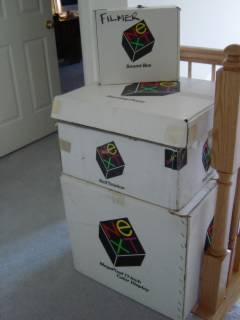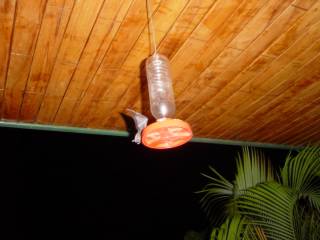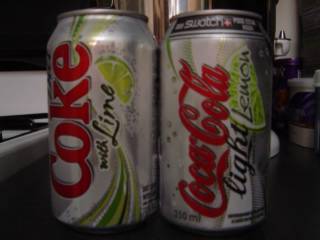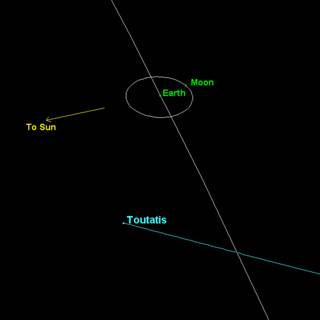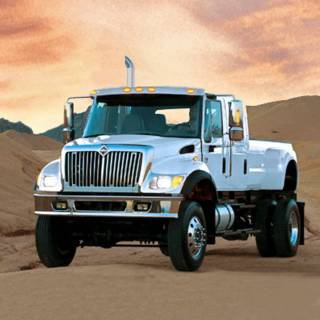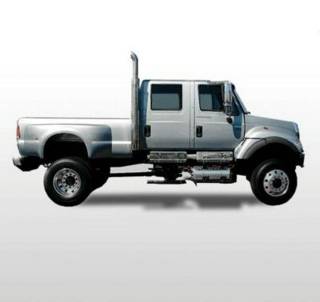First, the tectonic setting (click on the image for larger version):
The India and Australia plates are moving northward, and are shoving under (subducting) the Burma microplate. Here's a schematic of the setting, with the India/Australia plate on the left, moving to the right and under the Burma microplate on the right:
The movement occurs in sudden bursts -- earthquakes. Like banging a tray full of water, if the earthquake moves the seafloor, it sets off waves -- tsunamis.
Here is one of the early simulations done of the tsunami by the Japan National Institute of Advanced Industrial Science and Technology:
And here is another simulation of the Sumatra-Andaman tsunami done by NOAA. Notice the reflections off and refractions around India, Diego Garcia, the 90 East Ridge and the Maldives! These reflections and refractions can focus energy and cause the tsunami to be very high on some shores and not so high on others - so the threat is not uniform along all shorelines. Note that Australia's West coast is much closer to the initial movement than Kenya, but it got almost no resulting wave.
The Geological Survey and Caltech's Seismo Lab produced a first estimate of the amount of the slip along the fault of the great Sumatra-Andaman Islands earthquake:
The red star is the location of the hypocentre - where the earthquake began. The black line is the surface location of the subduction fault (the trench), colours show the amount of displacement in cm of the hanging (upper) wall of the fault relative to the foot (lower) wall. Note that most maps show the hypocentre as if this was where all the action was, but that a lot of the motion of the seafloor was probably several hundred kilometers to the Northeast (and in fact, later modelling shows that there was significant motion even up into the Andaman and Nicobar Islands). This difference between the location of the hypocenter and the main displacement values is typical - and misleading.
Now it becomes obvious why the North-West of Aceh got hit so hard - the largest slip is 200km farther up the peninsula than the hypocentre.
Note that even in this preliminary model, an area of about 1200 km by 100km has moved several meters. This resulted in several meters of seafloor uplift (and displaced water, creating the wave). The total energy released was estimated at 3.57X10^29 dyn.cm in 200 seconds, with a peak slip of about 20 meters. (Chen Ji, Caltech).
There were at least fourteen aftershocks larger than magnitude 6.0, and one larger than 7.0 (all of these respectable 'quakes on their own).
This was enough to cause a 22cm wave in San Diego harbor, 2.6 meters in Manzanillo, Mexico due to focusing effects, and several days of tidal height disturbances as the sloshing continues to reverberate around the ocean basins.
Movie of the Andreanof tsunami movie
- moves much more slowly in the shallow waters north of the Aleutians
- reflects off/refracts through the Hawaiian/Emperor chain - the BC coast gets hit twice: once directly, the second time as a reflection off the Hawaiian seamounts.
What it looked like on the ground in Thailand (Aftonbladet, 8.0 Mb .mov file)This is a different angle from a clip that received a lot of air time. During the second surge, off to the lower left while looking out to sea, one can see a couple behind a palm tree trying to get out from behind a pile of debris blocking the surge and into the bar area. As with the shot from the other angle, I'm not sure they made it before the debris collapsed onto them, and pinned them under tons of rushing water. This is a horrendous example of how innocent looking water can quickly turn deadly. This begins as an interesting video, and quickly becomes quite frightening.
Links:
- CNN Missing Persons Bulletin Board:
- Posting form
- Tanzania Bulletin Board
- Thailand A-H Surnames Bulletin Board
- Thailand I-O Surnames Bulletin Board
- Thailand P-Z Surnames Bulletin Board
- Myanmar Bulletin Board
- Maldives Bulletin Board
- Posting form
- Missing Persons Thailand Websites:
- Post pictures of your missing here, if in Thailand (forwarded to hospitals/morgues in Phuket, Phan-nga, and Krabi)
- 1
- 2, and
- 3
- Post pictures of your missing here, if in Thailand (forwarded to hospitals/morgues in Phuket, Phan-nga, and Krabi)
- Tsunami Videos
- Tsunami Warning Blog
- "Could It Happen Here? You Bet," Time, Jan. 2, 2005, by J. Madeleine Nash
- "Tsunami Group Will Expand Its Network," New York Times, Jan. 2, 2005, by Andrew C. Revkin (log-in required)
- "Tsunami Warning System Could Be Created," AP (Philadelphia Inquirer), Jan. 4, 2005, by Michael Casey (log-in required)
- Pacific Tsunami Warning Center (NOAA)
- West Coast and Alaska Tsunami Warning Center (NOAA)
- International Tsunami Information Center
- ITSU (International Coordination Group for the Tsunami Warning System in the Pacific)
- ITSU "expertise" links to organizations and university programs specializing in tsunami research
- Univ. Southern California Tsunami Research Group (links page)
- NOAA Pacific Marine Environmental Lab Tsunami Research Program (includes info on inundation mapping efforts).
- US Geological Survey Tsunami Links Page
- Sydney Morning Herald Tsunami Page and
here - Jakarta Post
- Malaysia Star
- CNN International and
here
There is a lot of talk now about an Indian Ocean Tsunami warning system, and support from the U.S. Government for a global system that will include the Atlantic too. Perhaps a good idea, but several things should be noted. The frequencies of tsunamis in these two other oceans are very much less than in the Pacific - so there is a very high probability that the systems will never be used. On the other hand, the process of preparation of such a system reduces societies' vulnerability to many different types of hazards at the same time, so while we may not use them for saving people from tsunamis, we may end up using them to save people from other types of disasters. The last thing is a comment regarding tsunamis - even if there had been a fully operating system in place (which includes not only an earthquake detection system and a wave detection system, but more critically an information dissemination and public evacuation plan), the system would have done nothing to save Aceh or possibly even Thailand, since the wave would have reached them before any possible plan could have been activated.
Here is an amazingly prescient paper published in the September 2004 issue of Geoscience Australia magazine about an Indian Ocean tsunami warning system: AusGeo News 75 p.4 (part 1, with the referenced article, is a 3.9 Mb PDF file)
The best advice: if you see the sea withdraw, you can be guaranteed that it will be coming back with a vengeance. Run for the hills.
And finally, a word about feral goats in the Andamans, who, I would bet, are still there.













